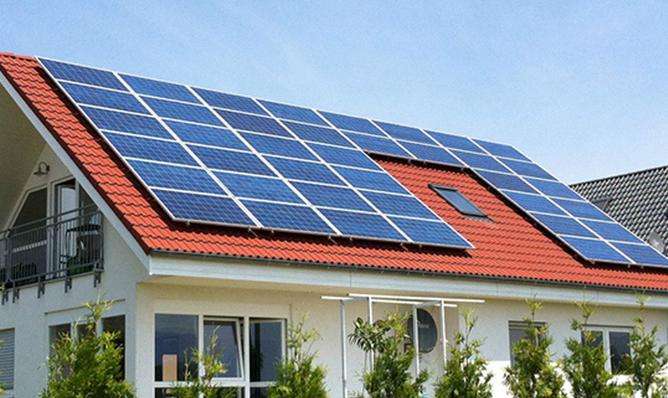Currently it is solar energy. Although sunlight is free, the price of photovoltaic panels is relatively high. It can only be said that the cost will decrease after the scale.
Although thermal power generation requires the burning of coal and hydroelectric power generation requires the construction of dams, the technical threshold is much lower.
The most illustrative thing is that if the cost of solar power generation was not high, then solar power generation would have been popularized long ago and there would be no market for thermal energy and hydroelectricity.
—————————————————————————————————————————
Advantages
(1) Universal: The sun shines all over the earth and there are no geographical restrictions, whether on land or sea, on mountains or on islands. It can be directly developed and used. without the need formining and transportation. (2) Harmless: The development and use of solar energy will not pollute the environment. It is one of the cleanest sources of energy, which is extremely valuable today as environmental pollution becomes more and more serious. (3) Huge: The energy of solar radiation that reaches the Earth's surface each year is approximately equivalent to 130,000 billion tons of coal, and its total amount constitutes the largest energy that can be developed in the world today. (4) Long term: Based on the current rate of nuclear energy generated by the sun, hydrogen storage is sufficient to last for tens of billions of years, and life on earth is also about billions of years. we can say that the energy of the sun is used in an inexhaustible way.
Disadvantages
(1) Dispersion: Although the total amount of solar radiationre reaching the Earth's surface is large, the density of the energy flow is very low. On average, near the Tropic of Cancer, when the weather is relatively clear in summer, the irradiance of solar radiation is greatest at noon. The average solar energy received in an area of 1 square meter perpendicular to the direction of sunlight is approx. 1000W if total averaged day and night throughout the year, that's only about 200W. In winter it is only about half, and on cloudy days it is usually only about 1/5. This energy flow density is very low. Therefore, when using solar energy, if we want to obtain a certain conversion power, we often need a set of collection and conversion equipment with a considerable area, which is expensive. (2) Instability: due to limitations of natural conditions such as day and night, season, latitudeof geographical and altitude, as well as the influence of random factors such as clear weather, cloudy weather, clouds and rain, solar irradiation reaches a certain level. Some soils are intermittent and extremely unstable, making more difficult to apply solar energy on a large scale. In order to make solar energy a continuous and stable energy source and ultimately become an alternative energy source that can compete with conventional energy sources, the problem of energy storage must be well solved , that is, the energy of solar radiation during clear days should be stored as much as possible for use at night or when it rains. It is used for everyday use, but currently energy storage is also one of the weakest links in solar energy use. (3) Low efficiency and high cost: At the current level of development of energy usesolar, certain aspects are theoretically feasible and technically mature. However, some devices using solar energy have low efficiency and high cost. Generally speaking, the economy cannot compete with conventional energy sources. In the future, for a while, the development of the use of solar energy, mainly limited by economics.
Today, with the continuous development of science and technology, the application of solar energy is more and more widespread. Home solar power generation is a new type of environmentally friendly energy. However, some friends are very puzzled: why does solar energy produce electricity?
1. A solar cell is a device that uses the photoelectric effect of semiconductor materials to convert solar energy into electrical energy. The basic process of photo effectovoltaic: Assuming that light shines on the solar cell and the light is admitted at the interface layer, photons having sufficient energy can excite the electrons of covalent bonds in P-type silicon and silicon type N, which results in the photovoltaic effect. electron generation - Pair of holes.
2. Electrons and holes near the interface layer will be separated from each other by the action of the electric field of the space charge before recombination . The electrons move towards the positively charged N region and the holes move towards the negatively charged P region. Through the charge separation of the interface layer, an outward testable voltage will be formed between the P region and the N region. At this point, electrodes can be added to both sides of the silicon wafer and connected to a voltmeter.
3. For solar cellsIn crystalline silicon, the typical open circuit voltage is 0.5 to 0.6 V. The more electron-hole pairs generated by light illuminating the interface layer, the higher the current. The more light energy the interface layer receives, the larger the surface area of the interface layer, i.e. the cell, and the greater the current formed in the solar cell.
Solar cells are a promising new energy source with three major advantages: permanence, cleanliness and flexibility. Solar cells have a long lifespan. As long as the sun exists, solar cells will exist. They can be invested once and used for a long time; Compared with thermal power generation, from the perspective of electricity generation, solar cells will not cause environmental pollution.














